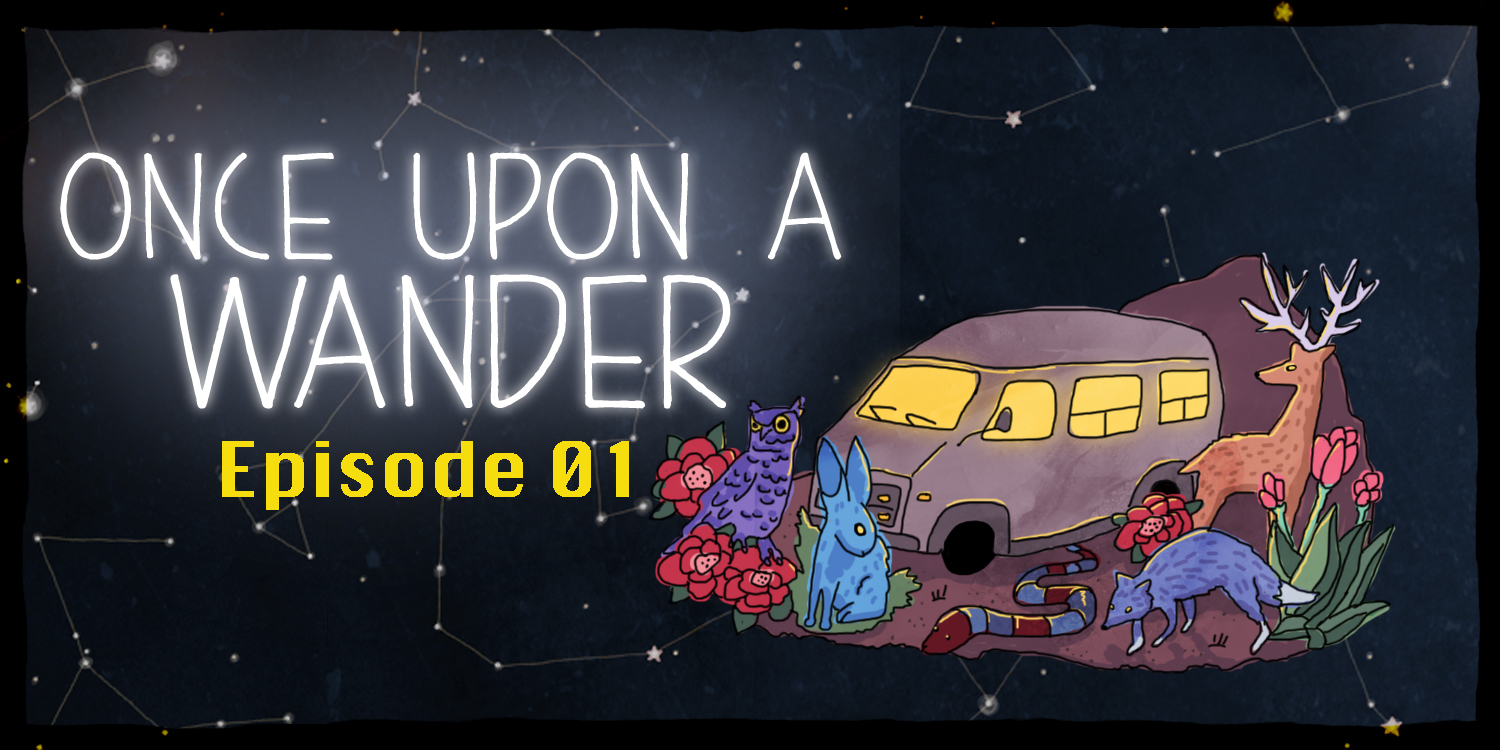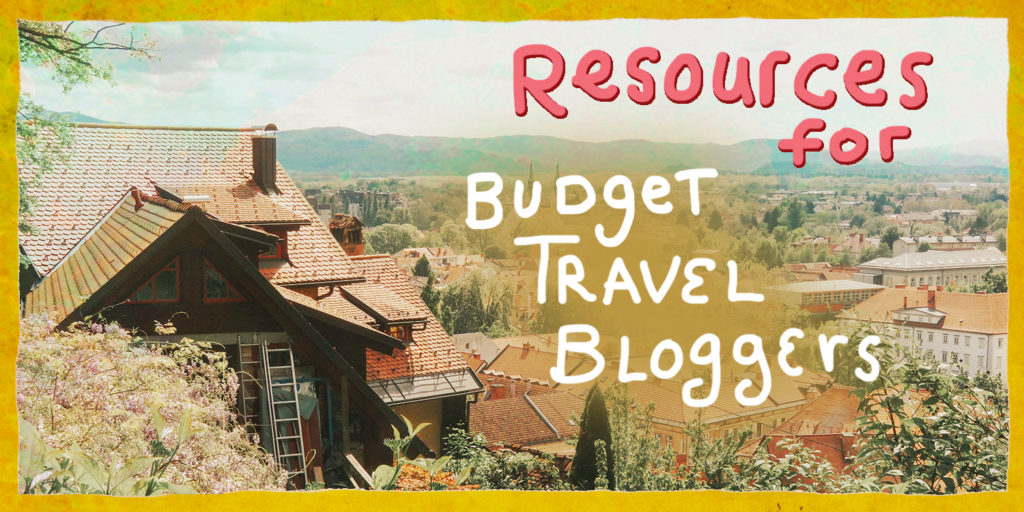This is a transcript of Episode 1 of the Once Upon A Wander podcast.
Today Jacqueline interviews Georgie, a traveler from Illinois who’s lived and worked at a boarding school, a surf lodge in Panama, various retreat centers, workaway volunteer stays, and more.
Jacqueline: Welcome to Once Upon A Wander. Today we’re here with traveler Georgie Watt, who’s had a few different seasonal jobs in different places throughout the US and in Panama, and today he’s going to tell us about his experience as a volunteer at the Ratna Ling Retreat Center in Northern California. He was there in 2017 volunteering for the Yeshe De Project. The idea was to help preserve the Tibetan culture through text because its threat of destruction by the Chinese.
So Georgie, welcome, and let’s get to it.
What was your initial impression upon arriving at Ratna Ling?
Georgie: Ok, so when we first got there we got like two days to settle in. We pulled up to this gated facility- huge and gated- which I’m told is about the boars, because there’s a lot of boars in the Sierra Nevadas.
It was so empty.
So empty. How can I describe it? There’s this main center, their big dining area, and it’s got wonderful patios, and the outdoor garden there that surrounds the building- they have a stream that’s throughout the patio system- it’s gorgeous. And it just looks out over Odiyan.
J: Over the nearby Odiyan retreat center?
G: Yeah
J: You can see it from their garden.
G: It’s all connected, the meditation center, and then the library, which is impressive and beautiful as well. Off to the wayside, up a little higher- because it’s all on hilltops- big pines- they actually had their own fire engine. And they were volunteer firefighters, because they got in trouble with building the book bindery up there. Because Tarthang Tulku just came in and was like I’m just gonna build this. And he didn’t check if there were zoning laws. They just- hippies built it. You know?
J: Good.
G: Big, pole barn type… it’s ugly, a cheap thing. The people who live there and run the place were all aging, and there didn’t seem to be a lot of young people. That’s not to say there weren’t young people, but the focus just wasn’t about creating an environment for young people. It was like an elderly sort of facility.
J: What does an average day look like?
G: So you’re expected morning, sunrise- you’re expected to be at the stupa to walk around it eleven times and chant
(Chanting)
G: And… that was awesome. And then we’d do a light reading of like a scripture or something. Explain it, talk about it, just say hello, basically.
J: Every morning?
G: Every morning.
J: Can you describe a little bit of the staff experience?
G: At first it felt like they were putting on a show for us, being new. But they consistently throughout the month did cool things like they read the Kanjur and Tanjur scriptures on a full moon and something for a new moon. So they were like
J: There were little staff events even though it was a small staff.
G: Yeah. They were the type of people that kinda kept to themselves, and you’d have dinner once in a while it was nice and they enjoyed talking but it was a little more sterile then the Menla experience where everyone’s there to be friends and hang out and have a good summer.
J: And you were there with your girlfriend, right?
G: Yeah.
J: Did you guys get to share a room or did they have strict male/female…
G: Yeah so actually their facility’s really nice. Their cabins have two beds and a bathroom. It’s very simple.
J: How was the food?
G: It was family style. Big buffet family style. Good food, actually. One of the girls was a vegan chef and then there was an older woman who also tended the gardens who kind of ran the kitchen.
J: Did a lot of the food come from the gardens?
G: No. That garden was not producing. It’s interesting, every old person there had a hobby to make sure they didn’t have to go volunteer at the Yeshe De bookbinding project
(laughter)
G: So the book binding project was mostly run by people who would drive in from Odiyan.
J: So what actually did you physically do in this book binding place?
G: Okay, so when you bind a book, there’s leaflets. Pages get printed on a big page, the page gets folded, and each one of these gets piled up in certain stacks and then you physically put them into the book bindery which is like a long thing, just a long machine the whole length of the factory. And you put all the leaflets- there’s a word for them- in order. And then you start the machine.
The book gets put together, it gets chopped on all sides, it gets pressed and it comes out beautiful and then someone at the very end is throwing them into boxes.
J: What’s your emotion?
G: It’s exhausting. It’s exhausting. Well, it’s nice and it’s meditative. Factory work is extremely meditative. Repetitive work is. Yeah, so it was cool to work around these people who had been very focused on something that you know is feeding them immensely and had a lot of value.
We did the book binding one day out of the thirty days I was there.
J: You only did it one time?
G: Exactly. There’s a lot of sheets that don’t get printed right. Tarthang Tulku is extremely reverent about Sanskrit texts. So even if it’s printed, if it has Sanskrit lettering on it, it has to be kept. They have forty years worth of old text that wasn’t used in a book. They kept it all.
They didn’t know what to do with it so then they asked him and then Tarthang Tulku meditated on it and said we’ll put them inside the stupas. Well, to make sure it’s not a giant fire hazard of palette after palette of these giant things, I would take a palette out, and I would just take tons and tons of what should be recycled material and put them into plastic vacuum seal bags, and vacuum seal them and put them on a new palette, and just made these vacuum-sealed bricks to put inside a stupa. And that’s what I did every day for thirty days. For ten hours a day.
J: Why were there so many misprints in Sanskrit?
G: Well it’s just part of the binding process. You print six too many sheets of this and five too many sheets of that, or this ream- this whole eighty-sheet ream- didn’t do well or you know, it’s got a smudge on it.
We did work on paletting Kanjurs and Tanjurs, though. I should say that. I didn’t do the vacuum sealing all the time. We actually had Kanjurs and Tanjurs that we wrapped in silk- those two books, Words of the Buddha and the Commentary on the Words of the Buddha. We did probably one solid week of just wrapping those scrolls and putting them on a palette to get them ready. Twenty or thirty palettes of that? Which is incredible. That’s a ton of scripts.
J: This is a non profit?
G: Yeah so goes to, like, monks. All new monks get a Kanjur and Tanjur. Buhtan, Vietnam, Northern India.
J: But they’re sending English copies of this text.
G: No, no these are the Sanskrit texts.
J: Oh you’re sending Sanskrit.
G: Right. The binding of the books is all in English, though. The book binder’s all in English. The scrolls… the way they do scrolls in Tibet is really long, rectangular sheets of paper that are all stacked on top of each other. And then you open it and you just flip a page at a time. Flip it over. And they think that’s a much better way to preserve it. And it is, if you keep it in the silk.
J: How many volunteers were working on putting papers in this stupa with you?
G: How many? Six people.
J: And how many working on the actual binding of the books?
G: Two guys. And then the publishing lady upstairs, where Dharma Publishing runs its business. And there’s a couple proofreading…
J: What was the agreement? Did you have to pay them a little bit? Did they give you a stipend?
G: No. No stipend, it was completely free volunteering for room and board. So the kitchen was open, they had a staff fridge. They were really strict on alcohol and drugs. Like none of that.
J: How many hours a day did you work?
G: I did ten, and then on Fridays we would do eight. Six days a week.
J: You worked six days a week?
G: Yeah.
J: Ten hour days?
G: Yeah. It was more for meditation. It was like… meditative.
J: So who would you recommend this experience to and who would you say should look for something different?
G: People who feel passionate about the Tibet story. About the history of what’s happened in Tibet. Like activists, cause-oriented people. Who are interested in a cause or interested in lineage or books because the amount of resources there in books is incredible.
J: And if you could make one change to how things worked over there, what would you add or take away?
G: I think they were in a process of realizing they needed to change. I thought I was aware that they started a stipend program just to attract young people. Another thing is groups. I think in the month I was there, of June, there was only like two groups, maybe three that came through. Groups that were renting out the retreat center. There was like a writers’ retreat once… I think they were trying their best with the community. It’s really small, it’s people who look for isolation and quiet and…
You can really- if you don’t want to work in the book bindery, there’s a million other things you can probably do for them on your own terms. Like I think they need help on websites…
J: Cool. So it’s the kind of place you could probably just email and tell them your skills and see if they might need help.
G: Yeah. What else? There’s a lot of nature. A lot of nature.
J: Yeah?
G: Yeah. It’s a huge area.
J: It looked kinda barren from the photos.
G: It’s a little barren. And it’s very wild.
J: Like, I didn’t even see trees.
G: There’s actually redwoods close by.
J: Yeah?
G: Yeah it’s in redwoods for sure and…
J: Could you walk to somewhere to be hidden from people?
G: You can- yeah, absolutely. There’s plenty of nature, and then you can walk all the way down to the Pacific Ocean if you want. It’s just set right back from highway 1. So you can actually walk from there to- I think it’s called Bigfoot Beach. It’s off the beaten path.
J: I think that’s it. Thank you, Georgie.
G: You’re welcome.
J: That was awesome.
Thanks for listening to our first episode of Once Upon a Wander. And I’m as excited as you are to see what happens for episode 2.
Browse every episode of Once Upon a Wander here or on Apple podcasts.


